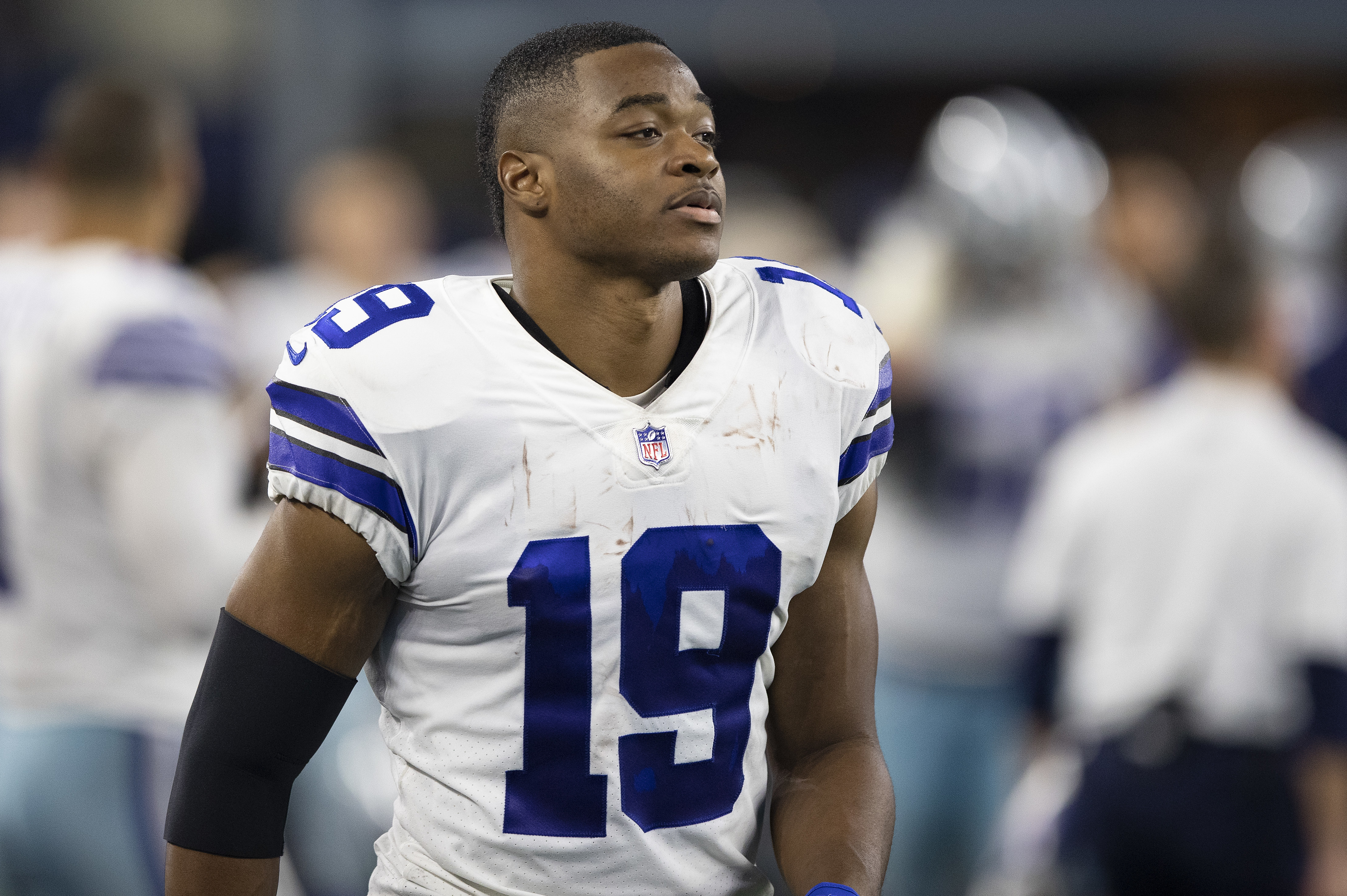The Dallas Cowboys are at a crossroads with their wide receiver corps, and a familiar name has emerged as a potential solution: Amari Cooper. After trading the four-time Pro Bowler to the Cleveland Browns in 2022 for a modest return, the Cowboys are now reportedly considering a reunion with the veteran wide receiver, per USA Today Sports. With the team opting not to draft a wide receiver in the 2025 NFL Draft, Cooper’s return could reshape Dallas’ offensive outlook. Here, we explore the possible scenarios if Cooper rejoins the Cowboys, from rekindling his connection with Dak Prescott to impacting the team’s younger receivers.

Rekindling the Prescott-Cooper Connection
When Amari Cooper was traded to Dallas from the Oakland Raiders in 2018, he quickly became Dak Prescott’s go-to target, posting back-to-back 1,000-yard seasons in 2019 and 2020. Their chemistry was undeniable, with Cooper’s precise route-running complementing Prescott’s ability to deliver accurate throws under pressure. If Cooper returns, re-establishing this connection could be seamless, given their prior success.
In Cleveland, Cooper recorded 1,250 yards in 2022 and 1,160 in 2023, proving he remains a high-caliber WR1 despite inconsistent quarterback play. For Prescott, who faced scrutiny in 2024 for lacking a reliable WR2 alongside CeeDee Lamb, Cooper’s return would provide a proven weapon. This reunion could elevate Dallas’ passing game, especially in clutch situations where Prescott has leaned heavily on Lamb. Expect Prescott to target Cooper early and often, potentially mirroring their 2019 synergy when Cooper averaged 83.1 yards per game.
Competing with CeeDee Lamb for WR1 Status
CeeDee Lamb has solidified himself as the Cowboys’ WR1, earning All-Pro honors and a massive contract extension in 2024. However, Cooper’s return could spark an intriguing dynamic. At 31, Cooper brings veteran savvy and a track record of elite production, which might challenge Lamb’s undisputed role as the primary target.
While Lamb’s youth and explosiveness give him an edge, Cooper’s ability to win contested catches and exploit zone coverages could make him a situational WR1 in certain matchups. For instance, against teams with weaker slot corners, Cooper’s versatility to line up inside or outside could draw defensive attention, freeing Lamb for big plays. Rather than a rivalry, this competition could create a dynamic duo, forcing defenses to pick their poison. The Cowboys’ offensive coordinator, Brian Schottenheimer, would likely design plays to maximize both players, potentially leading to career-high numbers for Lamb and a resurgent season for Cooper.
Impact on Young Receivers: Tolbert, Mingo, and Flournoy
The Cowboys’ current WR depth includes promising but unproven talents like Jalen Tolbert, Jonathan Mingo, and Ryan Flournoy. While owner Jerry Jones has praised their potential, none have emerged as a consistent WR2. Cooper’s return could have a dual effect on these young receivers: mentorship and reduced pressure.
Tolbert, entering his fourth season, has shown flashes but lacks the polish of a veteran. Cooper, known for his meticulous preparation, could serve as a mentor, helping Tolbert refine his route-running and situational awareness. Similarly, Mingo, acquired via trade in 2024, could benefit from Cooper’s guidance in adapting to Dallas’ complex offensive scheme. Flournoy, a 2024 sixth-round pick, might see limited snaps but could learn from Cooper’s professionalism, much like Cooper once learned from veterans like Michael Crabtree.
On the flip side, Cooper’s presence might limit targets for these youngsters, potentially stunting their development. If Cooper commands 6-8 targets per game, Tolbert and Mingo could be relegated to WR3 or WR4 roles, delaying their emergence. However, the reduced pressure to perform immediately could allow them to develop at a steadier pace, learning from Cooper’s example without the burden of carrying the offense.
Broader Implications for the Cowboys
A Cooper reunion wouldn’t just impact the passing game; it could reshape Dallas’ 2025 season trajectory. With a bolstered receiving corps, the Cowboys could better compete in the NFC East, where teams like the Philadelphia Eagles and Washington Commanders have invested heavily in offensive weapons. Cooper’s veteran presence could also stabilize an offense that struggled with inconsistency in 2024, particularly in games where Lamb was double-teamed.
Financially, acquiring Cooper would require careful cap management. His current contract with the Browns, restructured in 2024, carries a manageable cap hit, but Dallas might need to part with a mid-round draft pick or a young player to facilitate a trade. Alternatively, if Cooper hits free agency, the Cowboys could pursue a short-term deal, aligning with their “all-in” rhetoric for 2025.
What’s Next?
While the idea of Cooper returning to Dallas is tantalizing, it remains speculative. The Cowboys’ front office, led by Jerry and Stephen Jones, must weigh the cost of acquiring a veteran against the potential of their current roster. If Cooper rejoins the team, fans can expect a revitalized passing attack, a mentorship boost for young receivers, and a renewed push for a deep playoff run. For now, Cowboys Nation waits anxiously to see if this reunion becomes reality.